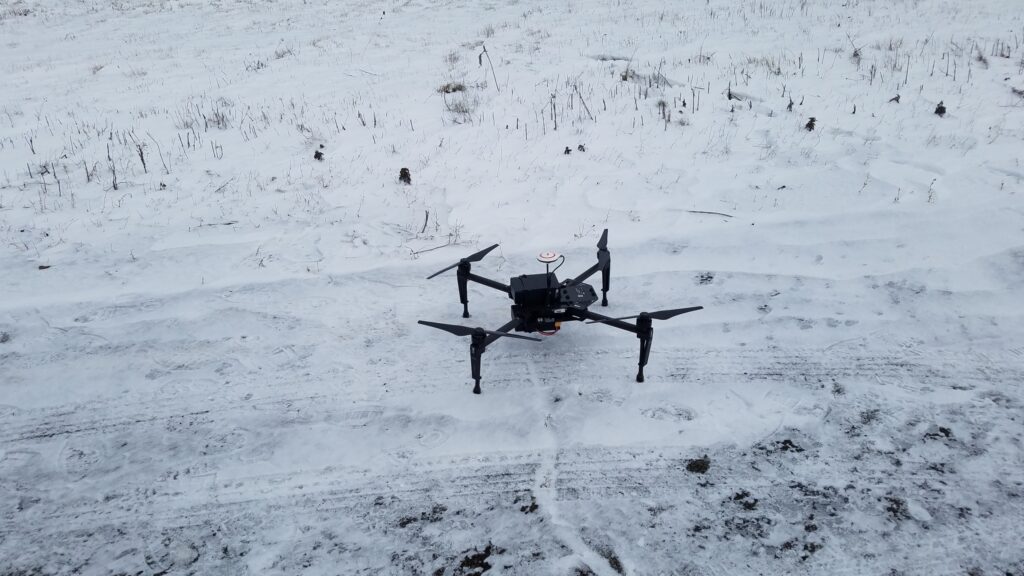Unmanned Aerial Vehicle (drones) technologies are rapidly being leveraged by businesses seeking the benefits drones provide to their commercial endeavors. The cost of UAV technologies has steadily decreased precipitating an exponential increase in the ownership of drones. Industries aligned to benefit from UAV use include mapping snow, crop management, and emergency responders. Unmanned Aerial Vehicles (drones) equipped with high-resolution digital cameras can be used to create 3D models of buildings and landscapes through aerial photogrammetry. This involves stitching together hundreds or thousands of photographic images in a computer program such as Pix4D, to create a point cloud and then a textured mesh. We are exploring Drone technology for snow and vegetation mapping. The potential for the synergy with existing remote sensing platforms to enhance snowpack properties estimates at larger scales using data assimilation techniques. We are evaluating adverse effects of complex topography and vegetation on the accuracy of snow depth measurements made using photogrammetric techniques. Accuracy of snow thermal conditions using UAVs will be evaluated using analyzing snow temperature over snow profile gradient, compact vs natural snow profile, open vs vegetated areas.

